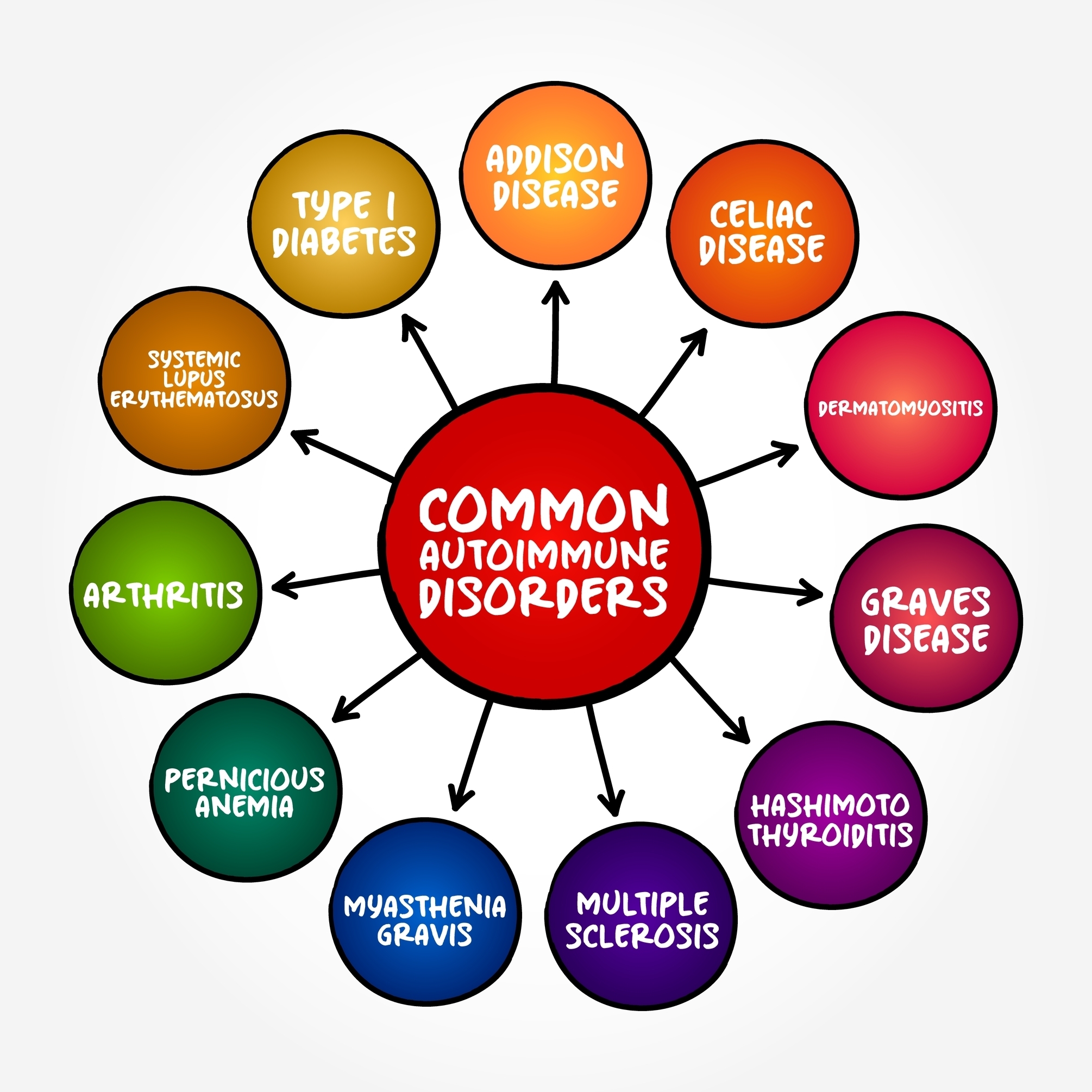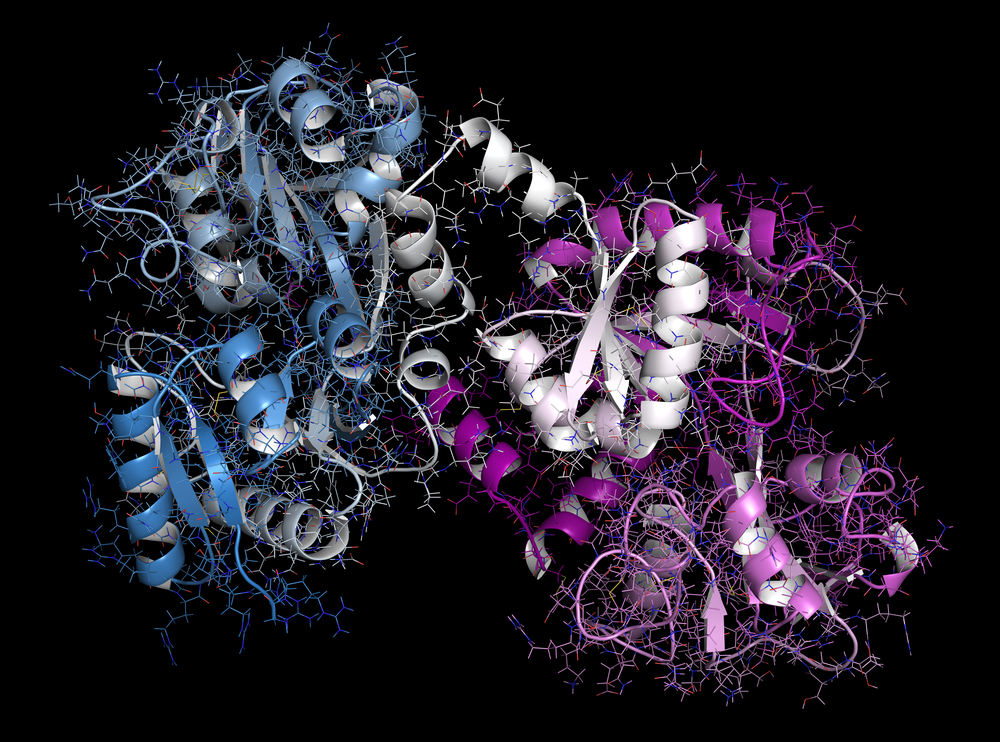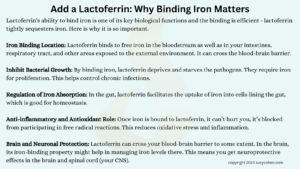What's On This Page?
ToggleLactoferrin is one supplement that I will be talking about today – it’s a champion when it comes to autoimmune support.* And you may not realize this, but in the past two years, we’ve seen an unprecedented number of new people with autoimmune diseases. These are popping up all over the world, even in young folks who should not be experiencing anything like this.
What used to be relatively unheard of, is now quite common. It’s sad to see, but if you want more details, you can read this PAPER which talks about the Lancet researchers that evaluated 22 million people and decided that today, one in 10 people have a disease!
Autoimmunity is really the topic of a book, however, I’ll do my best in the next few minutes to write this article which includes a few things that will help control the proliferation and activity of the damaging components – namely cytokines produced by certain immune cells.
With autoimmune, you need a wet blanket to throw over the cytokine fire. If you’re more interested in relief, skip over the next section about Cells and Cytokines – I only wrote it to explain how the attack progresses in the body, in case you wanted to noodle more strategies with your doctor later on.
Overview of Cells and Cytokines Involved
 In autoimmunity, the immune system, which is supposed to defend you against pathogens, mistakenly attacks your body’s own tissues. This jacked-up immune response involves various components of the immune system, including T cells, B cells, and other immune cells. Here’s a brief overview of how these otherwise good cells contribute to harmful autoimmunity:
In autoimmunity, the immune system, which is supposed to defend you against pathogens, mistakenly attacks your body’s own tissues. This jacked-up immune response involves various components of the immune system, including T cells, B cells, and other immune cells. Here’s a brief overview of how these otherwise good cells contribute to harmful autoimmunity:
T Cells: T cells, particularly T helper cells (like Th1, Th17), play a critical role in autoimmunity. Normally, these cells help regulate immune responses to pathogens. However, in autoimmunity, they can become dysregulated and hyperactive.
Th1 Cells: These cells are involved in promoting inflammation and are often associated with many autoimmune diseases. They can produce pro-inflammatory cytokines that contribute to tissue damage. The cytokines these cells produce include IFN-, IL-2, IL-3, TNF-α and beta.
Th17 Cells: These cells are a subtype of T helper cells known for their role in autoimmunity. They produce interleukin-17 (IL-17) and other inflammatory cytokines that can lead to inflammation and tissue destruction in autoimmune diseases.
B Cells: B cells are responsible for producing antibodies to fight invaders in your body. In autoimmune diseases, B cells can produce autoantibodies that target the body’s own tissues. These autoantibodies can directly cause damage or contribute to inflammation and disease progression.
Macrophages: These cells are part of the innate immune system and are involved in engulfing and destroying pathogens similar to Pac-Man! They are actually just big white blood cells. In autoimmune diseases, your macrophages activate without control and cause inflammation by you guessed it… releasing thosepro-inflammatory cytokines.
Dendritic Cells: These cells are good at evaluating pathogens, and making a mental note about whether or not the “bug” is dangerous, or it is just itself! So it helps with self-tolerance, but it also is important for presenting antigens to T cells (if they’re bad) so that those T cells can mount a fight in order to defend themselves.
In autoimmunity, they may present your own tissue to the T cells which then mount an immune response, but that’s only because the dendritic cells are messed up and accidentally presented a self-antigen to the T cells. They’re not supposed to present “self” they’re only supposed to report pathogens.
There’s more, I don’t want to go on about this part because it isn’t the focus of the article. Suffice it to say autoimmune diseases are very complex and always have various cells and parts of the immune system working improperly.
Lactoferrin
Have you heard of this before? When it comes to managing autoimmune conditions, the right balance of supplements can make a world of difference. One such supplement, often overlooked, is lactoferrin.
You probably know “lacto” means milk and “ferrin” refers to iron. By the way, some quality brands spell it with a “k” as in laktoferrin, that’s exactly the same thing as lactoferrin.
Lactoferrin is actually a component of your eyes, it’s in the tear film. Therefore it plays a role in ocular health and vision.
Like other supplements for autoimmune conditions, it works a bit like that wet blanket I mentioned earlier. This natural protein, found in both human and cow’s milk, is more than just a nutritional component, it’s a multifaceted compound that does more than just one thing to help support a person with an autoimmune disorder.
Why Lactoferrin for Autoimmune Support?

Lactoferrin stands out for its ability to modulate the immune response.* In autoimmune diseases, where the body’s defense system turns against itself, lactoferrin helps restore balance. It’s like a skilled mediator, ensuring that your immune system functions optimally without going into overdrive. This is the point of all interventions whether they are conventional or natural… to stop the immune system cells from secreting bad (pro-inflammatory) cytokines which then slows down the progression of the autoimmune condition.
But that’s not all. Lactoferrin is also a champion in managing inflammation,* a common culprit behind the pain and suffering associated with all autoimmune diseases including rheumatoid, Sjogren’s, lupus, psoriasis, and others. Its anti-inflammatory prowess helps soothe the chronic inflammation that characterizes these conditions and many others.*
The protein’s antimicrobial properties are another feather in its cap. By attempting to fend off infections, lactoferrin reduces the chances of triggering (or exacerbating) the body’s natural autoimmune response. It serves as a defensive suit of armor, safeguarding against other factors that could worsen autoimmune conditions.
It won’t prevent autoimmunity though. There is no agreement on what exactly sparks an autoimmune condition, so no one truly knows how to prevent them as of this writing. Some think they arise from dietary antigens, a “leaky gut,” environmental triggers, molecular mimicry, gut microbiome imbalances, exposure to parasites early on in childhood, possible vaccines residues/fillers, hormonal influences, fungal infections, mold, Lyme, the list goes on and on.
One thing people never think about is medications, but there are a handful that might have a correlation with certain diseases. As a pharmacist, I can create a section for you on medications that are associated with causing autoimmune conditions.
See below. Again, there is debate on what causes an autoimmune disease, even when it comes to medications. So I’m going to tell you which ones *might* be associated with autoimmunity, that way you can have a conversation with your doctor.
List of Drugs Associated with Autoimmune Conditions:
This is not a complete list.
- Hydralazine – Used for high blood pressure.
- Procainamide – A heart rhythm medication.
- Isoniazid – Used to treat and prevent tuberculosis.
- Minocycline – An antibiotic often used for acne.
- Alpha-interferons – Used in the treatment of certain viral infections and cancers.
- TNF (Tumor Necrosis Factor) Inhibitors – Used for rheumatoid arthritis and other autoimmune conditions but can paradoxically trigger autoimmune responses in some cases.
- Certain Statins – Used for cholesterol management but can trigger autoimmune muscle disease in rare cases.
Gut Health and Lactoferrin
Your gut health and the connection to microbiome is also crucial. Lactoferrin contributes to a healthy gut microbiome, which is increasingly recognized as a cornerstone in autoimmune health. A balanced gut means a balanced immune response. This does not replace probiotics, it is taken with them.
Lastly, lactoferrin’s antioxidant and iron-binding capabilities play a critical role. By combating oxidative stress and managing iron metabolism, lactoferrin helps address underlying issues often seen in autoimmune diseases. Down below there is a box explaining iron’s role more fully, but you should know it sometimes acts like a free radical and so lactoferrin’s ability to suck it out of the body works to make you feel better.
This supplement works mainly in the bloodstream, grabbing loose particles of iron. It also goes into some tissues. And in the brain, even though the iron-binding property of lactoferrin is weak, it is still definitely able to bind iron. I think this helps in managing iron levels up in those delicate brain cells which can’t handle too much iron! Even the slightest excess makes you feel terrible. What that does is reduces oxidative stress, contributing to its neuroprotective effects and minimizing neurological problems (if you have them).

Lactoferrin’s ability to bind iron is one of its key biological functions and occurs primarily in the bloodstream and at various mucosal sites throughout the body. Here’s how it works:
Iron Binding in the Bloodstream and Mucosal Surfaces: Lactoferrin binds to free iron in the bloodstream and at mucosal surfaces (like those in the intestines, respiratory tract, and other areas exposed to the external environment). This binding is highly efficient, allowing lactoferrin to tightly sequester iron.
Preventing Bacterial Growth: By binding iron, lactoferrin deprives bacteria of this essential nutrient. Many bacteria require iron for growth, so lactoferrin’s iron-binding ability helps inhibit bacterial growth and infection.
Regulation of Iron Absorption: In the gut, lactoferrin can influence iron absorption. It can facilitate the uptake of iron in cells lining the gut, aiding in iron homeostasis. This is particularly important in early life, as lactoferrin in breast milk contributes to the iron needs of infants.
Anti-inflammatory and Antioxidant Role: The iron bound to lactoferrin is not available to participate in harmful free radical-generating reactions. This reduces oxidative stress and inflammation, which is beneficial, especially in the context of autoimmune diseases and infections.
Brain and Neuroprotective Effects: While the primary action of lactoferrin’s iron-binding occurs in the bloodstream and mucosal surfaces, lactoferrin can cross the blood-brain barrier to a limited extent. In the brain, its iron-binding property might help in managing iron levels and reducing oxidative stress, contributing to its neuroprotective effects.
Summary
There is so much controversy in what causes an autoimmune disease, but that is not the focus of my article so I will stop right here on the causes. Rather it is my intention to help you figure out how you can live comfortably in your skin if you already have a condition.
As your doctor about lactoferrin which is an over-the-counter supplement sold online and at health food stores. Tell him/her that it binds iron (predominantly in the bloodstream) and mucosal surfaces, thus controlling iron-related oxidative damage. It also inhibits microbial growth, manages inflammation markers like cytokines, and potentially offers neuroprotective benefits as a side effect! This diverse mechanism of action is part of what makes lactoferrin so appealing to me as a pharmacist. I think it’s relatively safe too.
A lot of experts think this is a valuable option for health problems that have something to do with infection, cytokine damage, and iron overload. Whether or not it’s right for you is not up to me, so again, talk to your own practitioner.
But Wait, There’s More! It’s Not All About Lactoferrin
While lactoferrin is a star player that I’ve taught you about today, it shines brightest when part of a team. The quarterback will never win a football game without his tight ends, offensive tackles, running backs, and kickers.
So part of a good team of immunosupportive supplements could include other things which I’ve listed below for you.
List of Autoimmune Supportive Supplements:
- Lactoferrin – Antioxidant for immune modulation and management of iron overload.
- EGCG – Green tea catechins help control spleen inflammation.
- Catalase – Breaks down pro-inflammatory peroxide released by cells.
- Resveratrol – Alters gene expression and manages cytokines.
- Glutathione – A potent master antioxidant – helps vacuum free radicals.
- EpiCor – Enhances overall immune function like a wet blanket.
- Andrographis – Known for immune-boosting and anti-inflammatory properties.
- Probiotics – Supports a healthy gut microbiome, essential for immune balance.
- Omega-3 Fatty Acids – Reduces inflammation and supports immune function.
- Vitamin D – Essential for immune regulation.
- Curcumin – The active ingredient in turmeric, known for its anti-inflammatory effects.
- Ginger – Has anti-inflammatory and antioxidant properties.
- Selenium – An antioxidant that supports immune function.
What Else Can You Do for Autoimmune Conditions?
Now that you know about lactoferrin and other supplements to help yourself, consider a few other things to keep your body in shape.
As the chill of winter sets in all over America, it’s tempting to mimic our furry friends and hibernate, diving into a tub of Breyer’s and Netflix marathons. Okay, maybe that’s just me. Some days the sun goes down at 4:30 pm around here (Colorado)! In Alaska, it’s dark around the clock!
But here’s the scoop (and I’m not talking about Breyer’s this time): Winter can be tough, especially for those battling autoimmune issues. Your pain might get stronger, and your inflammation more prominent. People tend to have more hospitalizations and flare-ups in the colder months. So one thing you can do is exercise.
Exercise is absolutely non-negotiable in my opinion. No one ever regretted a workout, but many have regretted skipping it. So, whether it’s a brisk walk in the winter air, some pilates, or even a hot yoga session, keep your body moving!
Winter is not a free pass to abandon salads for pizza (as tempting as that sounds). Your body still craves the good stuff – balanced meals, vitamins, and yes, those supplements we just talked about. So before you cozy up to a warm fire, and stare at the beauty of snow (unless you’re shoveling it, then not so much), take care of your body and keep your eye on your health goals.
Last thing – HOPE! There’s nothing wrong with that. Even if your doctor has told you there’s nothing more that can be tried… don’t believe it. There is always hope, there are always new things, and sometimes there are old things (like natural remedies that have centuries of safe use) and lots of anecdotal research – there’s hope. Do the research yourself, and keep experimenting. The goal is to get your immune system in balance and control the self-attack.

Suzy Cohen, has been a licensed pharmacist for over 30 years and believes the best approach to chronic illness is a combination of natural medicine and conventional. She founded her own dietary supplement company specializing in custom-formulas, some of which have patents. With a special focus on functional medicine, thyroid health and drug nutrient depletion, Suzy is the author of several related books including Thyroid Healthy, Drug Muggers, Diabetes Without Drugs, and a nationally syndicated column.
